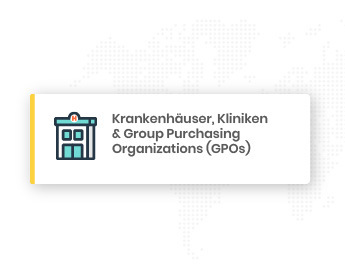
Terms such as big data, machine learning, neural networks and artificial intelligence have been on everyone's lips, and not just since the Harvard Business Review named the data scientist the “Sexiest Job of the 21st Century” in 2012. * But where does the hype come from? And is it no longer old wine in new bottles?
Terms such as big data, machine learning, neural networks and artificial intelligence have been on everyone's lips, and not just since the Harvard Business Review named the data scientist the “Sexiest Job of the 21st Century” in 2012. * But where does the hype come from? And is it no longer old wine in new bottles?
THE BEGINNINGS
Let's start with the basics. The term data scientist was first coined at the beginning of the 21st century by DJ Patil from LinkedIn and Jeff Hammerbacher from Facebook. Their goal was to determine “business values” from the data on their websites. The techniques you used come from the fields of mathematics, statistics and IT and henceforth determined the tools of data scientists. Mathematics is one of the oldest sciences, Bayes' theorem, a basic statistical principle, was formulated in 1763 and Konrad Zuse developed a computer as early as the 1940s, admittedly not too powerful. Sounds like data science is adorning itself with old feathers.
THE DIGITIZATION
“All newfangled nonsense, we calculated sales forecasts back in the 80s!” Is just one of many sentences that data scientists often hear in consulting situations. One could agree with this if it weren't for digitization as one of the big, if not the biggest, drivers. In 2020 we will leave digital traces in almost everything we do. Every receipt ends up in a database, music is played on Spotify, our mobile phones track us permanently and even the most intimate moments such as social relationships or sleep can be analyzed thanks to the smartwatch. The resulting volume of data is estimated to grow to 175 billion terabytes by 2025 **. To make it clear: if you save this amount on DVDs, you could stack all of them 23 times from the earth to the moon.
Another big driver is the exponential increase in computing power. Today it is possible to perform serverless calculations in the cloud and thus process this amount of data in the first place.
THE PRACTICE
In practice, the existing data is processed in such a way that patterns can be recognized - among other things with the aim of “predicting” the future. The example of sales forecasts, for example a supermarket, reflects the developments mentioned very well. What could be more annoying than standing in the supermarket on a Saturday lunchtime and no longer getting your beloved brand of beer or cake? The availability of goods and the associated optimal storage and order quantity is a highly critical issue for every retail company that is optimized with the help of data science.
The sale of cakes or beer depends on a large number of factors that can be taken into account today due to the amount of data and the available computing power. Future sales volumes are no longer forecast based on past sales, but a large number of influencing factors are used. The weather, the day of the week, the time, school holidays, the game result of the local football club, the TV program, the local events, the surrounding traffic situation, construction sites and much more are taken into account. Machines record these characteristics from the collected data, learn the connections and predict the future based on it - i.e. exactly how many bottles of beer of a certain type or cakes of a certain brand on 11.11.2020 at 11:11 a.m. in the supermarket on the corner and to be sold right there. So we encounter data science every day and make our lives more pleasant.
DATA SCIENCE AT ATRIFY
So the hype is justified. But what does all of this have to do with atrify and product master data? As part of the User Experience department at atrify, the clear mission is to improve the customer experience. The focus of our work, our daily activities, is the customer. When entering attributes, sending and receiving master data, contacting our teams, be it in sales or support, our customers come into contact with us in a variety of ways. We want to use these contacts even more intensively in the future in order to respond to customer requests and to continuously improve our products. For example, through further dynamization of the input masks in atrify publishing or input suggestions that are even more precisely tailored to the user and the needs of his branch.
Swell:
* https://hbr.org/2012/10/data-scien















